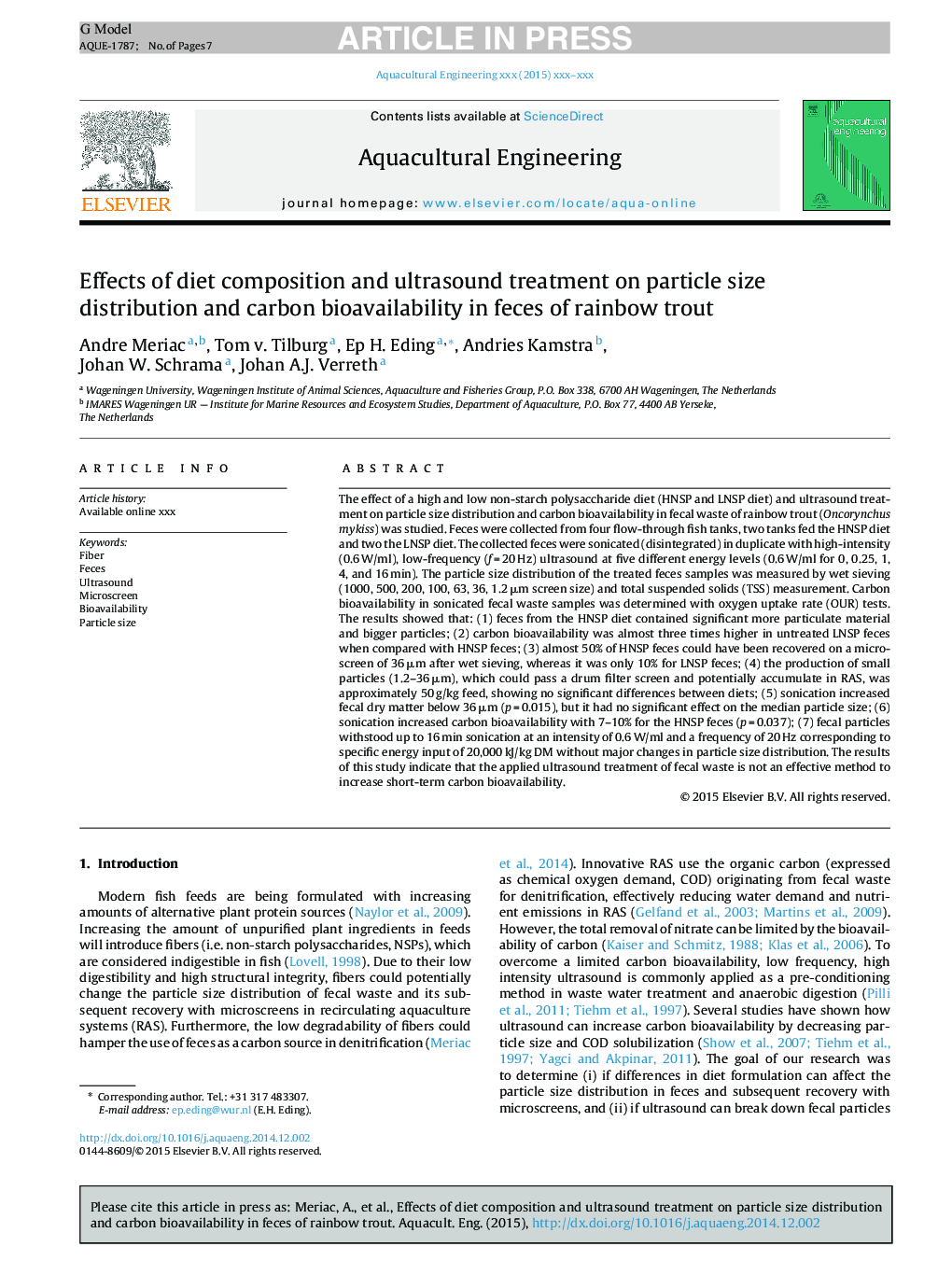| Article ID | Journal | Published Year | Pages | File Type |
|---|---|---|---|---|
| 6381325 | Aquacultural Engineering | 2015 | 7 Pages |
Abstract
The effect of a high and low non-starch polysaccharide diet (HNSP and LNSP diet) and ultrasound treatment on particle size distribution and carbon bioavailability in fecal waste of rainbow trout (Oncorynchus mykiss) was studied. Feces were collected from four flow-through fish tanks, two tanks fed the HNSP diet and two the LNSP diet. The collected feces were sonicated (disintegrated) in duplicate with high-intensity (0.6 W/ml), low-frequency (f = 20 Hz) ultrasound at five different energy levels (0.6 W/ml for 0, 0.25, 1, 4, and 16 min). The particle size distribution of the treated feces samples was measured by wet sieving (1000, 500, 200, 100, 63, 36, 1.2 μm screen size) and total suspended solids (TSS) measurement. Carbon bioavailability in sonicated fecal waste samples was determined with oxygen uptake rate (OUR) tests. The results showed that: (1) feces from the HNSP diet contained significant more particulate material and bigger particles; (2) carbon bioavailability was almost three times higher in untreated LNSP feces when compared with HNSP feces; (3) almost 50% of HNSP feces could have been recovered on a microscreen of 36 μm after wet sieving, whereas it was only 10% for LNSP feces; (4) the production of small particles (1.2-36 μm), which could pass a drum filter screen and potentially accumulate in RAS, was approximately 50 g/kg feed, showing no significant differences between diets; (5) sonication increased fecal dry matter below 36 μm (p = 0.015), but it had no significant effect on the median particle size; (6) sonication increased carbon bioavailability with 7-10% for the HNSP feces (p = 0.037); (7) fecal particles withstood up to 16 min sonication at an intensity of 0.6 W/ml and a frequency of 20 Hz corresponding to specific energy input of 20,000 kJ/kg DM without major changes in particle size distribution. The results of this study indicate that the applied ultrasound treatment of fecal waste is not an effective method to increase short-term carbon bioavailability.
Related Topics
Life Sciences
Agricultural and Biological Sciences
Aquatic Science
Authors
Andre Meriac, Tom P.A. v. Tilburg, Ep H. Eding, Andries Kamstra, Johan W. Schrama, Johan A.J. Verreth,
